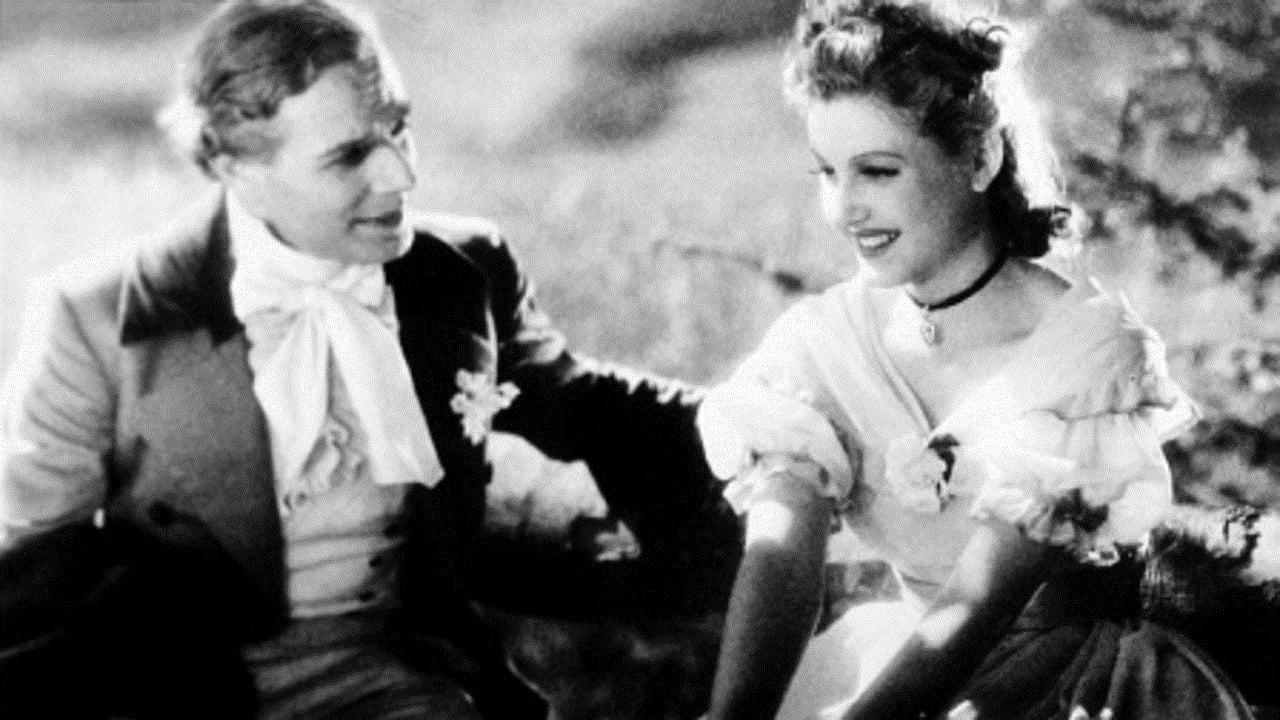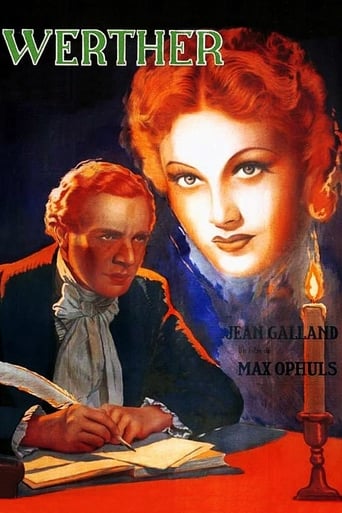



Strong and Moving!
Don't listen to the Hype. It's awful
This movie feels like it was made purely to piss off people who want good shows
View MoreIt's a good bad... and worth a popcorn matinée. While it's easy to lament what could have been...
View MoreAlready here in 1938 Max Ophuls proves himself the master of romantic aestheticism in a deeply moving and fascinating rendering of one of the most classic of all novels and the most deplorable of love stories, but the fact that it couldn't have ended worse is treated with expert sense of good taste. Although everybody knows the story and how it must end in suicide, Ophuls still makes it come as a surprise, and it is marvelously illustrated without showing it. Also the actors make a splendid job of the performances and couldn't have been better, although none of them is known or remembered today. You can well imagine Danielle Darrieux and Gerard Philippe in the same roles not doing any better (or worse). Also the music is excellently suited and not allowed to dominate too much - the use of the church bells and their melody quite triggers the story. Max Ophuls has simply succeeded in translating a novel of letters into a qualified drama without making it theatrical - it is perfectly organic all the way and runs with smooth efficiency, constantly accelerating the tension and the drama from ideal idylls in the beginning to gradually growing into dead serious business. It was a delight to see Goethe so successfully adapted for the screen - I would believe him to have been the most difficult of authors to undergo that treatment with any success. Especially fascinating is the cinematic technique and innovative tricks that Ophuls uses to add life and interest to his film. It is throughout very atmospherical, the moods of the novel are faithfully transported to the screen, and above all the film is marked by Ophuils' famous obsession with details, which no one could use to enhance the quality of a film better than he. The greatest joy of seeing this film was actually to be able to recognize all the familiar tricks and styles of this one of the greatest of all cinema masters as early as 1938. It has been pointed out, that it's a French film made on a German novel in the year before the apocalypse of Germany and the second world war. He had made many films in Germany previously but henceforward moved to France - and the war and its circumstances caused him a time out for seven years - to then return i full bloom with all his major masterworks.
View MoreFor many non-scholars this is probably one of the earliest Ophuls movies they will have encountered; he had made some sixteen films in Germany, France and Italy but tends to appear as a blip on the average viewer's radar with the 1939/40 Mayerling with Edwige Feuillere then appear permanently with Letter From An Unknown Woman in 1948 and everything that followed both in America and France. This is his take on Goethe and I resisted the temptation to summarize it as Getting Goethe's Garter. Even today it's not obligatory to adapt a novel faithfully and in 1938 there was an even more cavalier approach so that Ophuls thinks nothing of advancing the time-frame of the original and shifting the focus of attention from Werther to Charlotte though neither diminish the original unless, of course, you're a purist. We don't get too much of the celebrated 'circular' camera movements that tend to define Ophuls but he does indulge in dissolves, super-impositions and tracking shots and forges consistent links between Music and Visuals, inded Charlotte's love of and reaction to Music seems to take precedence over Werther's heartbreak but again in the context of the kind of film Ophuls has made this works. On a basic level the plot is menage a trois-lite; Werther arrives in a new town to take up a post in local government though his personality -carefree, poetic - is at odds with his career path. He bonds with his immediate supervisor, Albert, despite their contrasting personalities and when Albert leaves town on business Werther meets and falls in love with Charlotte who is engaged to Albert, a detail she omits to mention as she reciprocates Werther's feelings. With Werther in mid-proposal she finally confesses, feeling bound by honour more than love. She marries Albert, Werther turns to drink and whores and it all ends in tears. Not exactly Citizen Kane but Ophuls brings his artistry to bear and extracts a magical performance out of seventeen year old Annie Vernay (who was to die tragically three years later after contracting typhoid) who is saddled with that most thankless of roles the 'decent' person who adheres to a moral code even if it means sacrificing happiness. Like the man said this is definitely worth a look.
View MoreThe "Sorrows of Young Werther" (1774), a rather hapless and excessively emotional law clerk, is often thought of as the first great German novel. Whether it is or isn't is not important. What is important is that Goethe's epistolary work (no doubt influenced by Samuel Richardson and Laurence Sterne, though probably not Tobias Smollett) had a monumental impact on the development of German romanticism, and on the development of a poetry of feeling, of 'sturm und drang'. It impacted upon almost all forms of humanist endeavour: drama (especially during the 1770s through the work of Lessing), poetry, theology (still the queen of the sciences in late eighteenth century Germany), history, and other categories of belles-lettres. It exploded on the continental literary scene and vaulted its author to the status of a superstar. Thousands of young men committed imitative suicide, and Napoleon kept a copy in his knapsack.Werther is supposed to have been, like Goethe himself, a junior clerk in the Reichskammersgericht (the imperial supreme court) based in the free upper Rheinish city of Wetzlar. Lotte is essentially Charlotte Buff, Goethe's lost love (in this instance a decent performance by the delightful Annie Vernay).The story is very well known, and there is no need to repeat any of the details. Pierre Richard-Willm, often derided as rather stiff and wooden is exactly right for this eponymous role. He has a rather vague and abstracted appearance that subverts his looks (he was probably rather old for the part, but gets away with it). The audience can easily scent a loser. In Adam von Hochatten (Jean Galland) we can detect a winner, secure in his status and prospects.Werther gets lost in drink and in an obsession with James Macpherson's forgery of Ossian. Max Ophuls carries us away in in a state of emotional and romantic resignation and despair to the music of (variously) J. S. Bach, W. F. Mozart, Beethoven, Schubert (very apt, Beethoven and Schubert), and Haydn. The costumes are well done (if a little anachronistic), as is the art direction. Ophuls is able to convey an authentic feeling - if not for 1774, then perhaps 1804. We have for instance a scene with a slightly fustian grand duke (Phillippe Richard), and we are reminded that the old Germany was a mosaic of innumerable petty principalities. Some critics, notably Richard Roud, accused Ophuls of vulgarising this supreme novel. That was perhaps inevitable in any cinematic adaptation. However, this is a very fine effort. The most curious thing is why France was making a film of the Great German Novel at all, and particularly in 1938?
View MoreThis was Ophuls rendering on film of Goethe's classic. Although not the best of his work, the acting is quite good. The most remarkable aspects are the cinematography and the direction. There is a with very interesting use of lighting, with pools of light drawing attention to specific parts of the set and characters, more typical of theater than 30's cinema. But the direction uses others devices to avoid the "stagy" look, like the interposition of objects between the camera and the action to create depth, sometimes using deep focus. But that was shortly before Citizen Kane...
View More